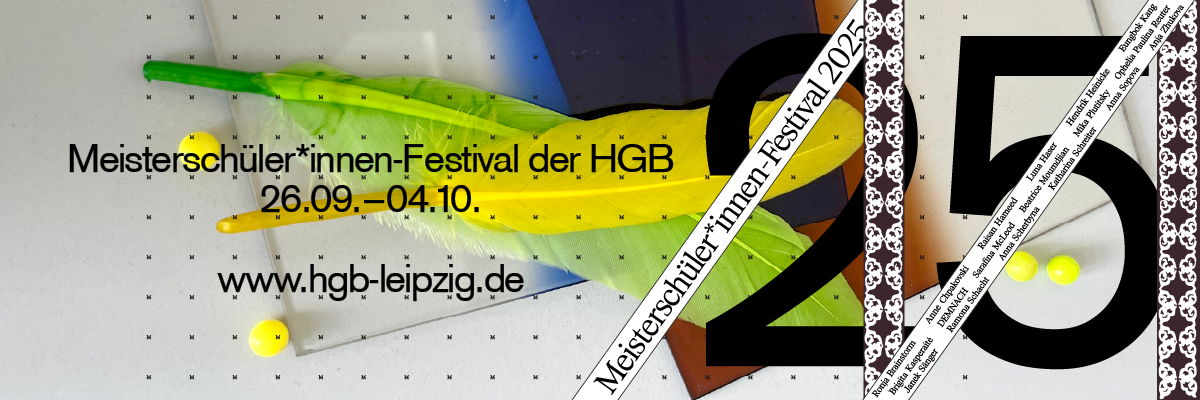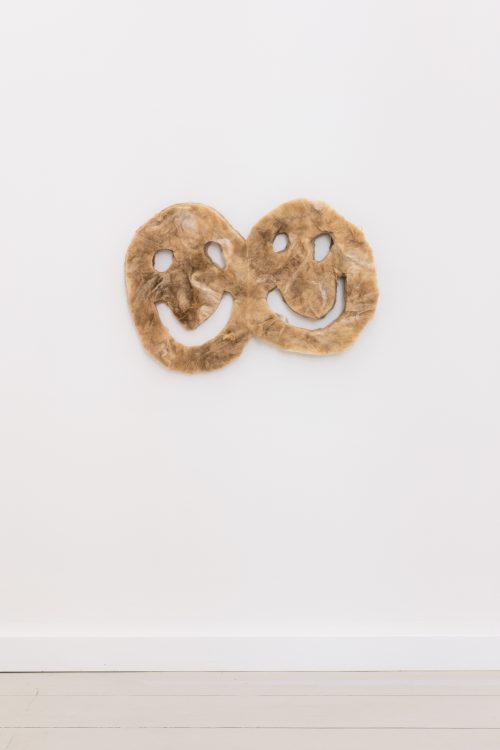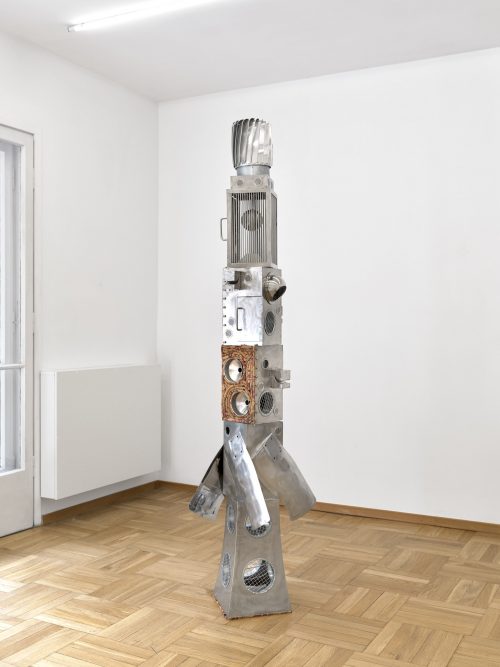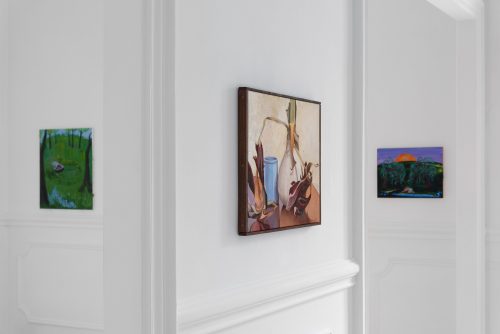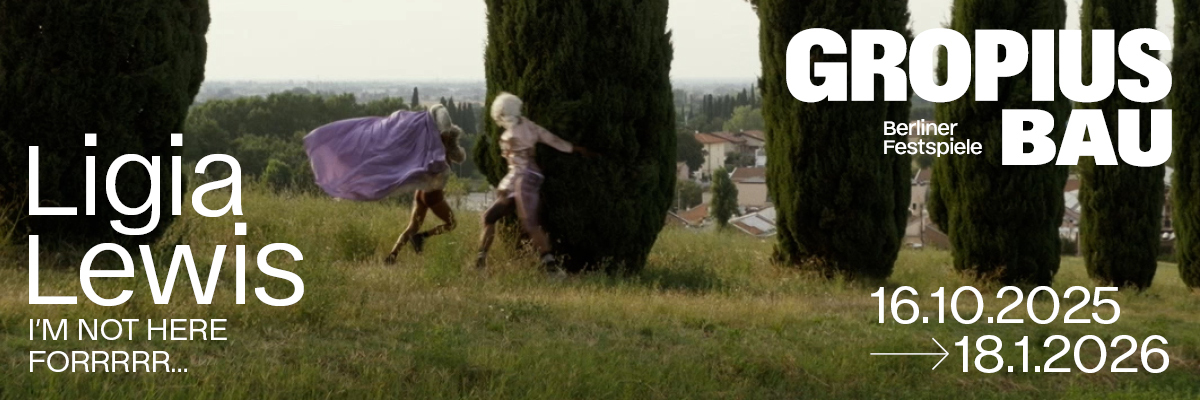
Nicholas Odhiambo Mboya
Utopia–Dystopia
Project Info
- 💙 Kunsthaus Hamburg
- 💚 Anna Nowak
- 🖤 Nicholas Odhiambo Mboya
- 💜 Anna Nowak
- 💛 Antje Sauer
Share on
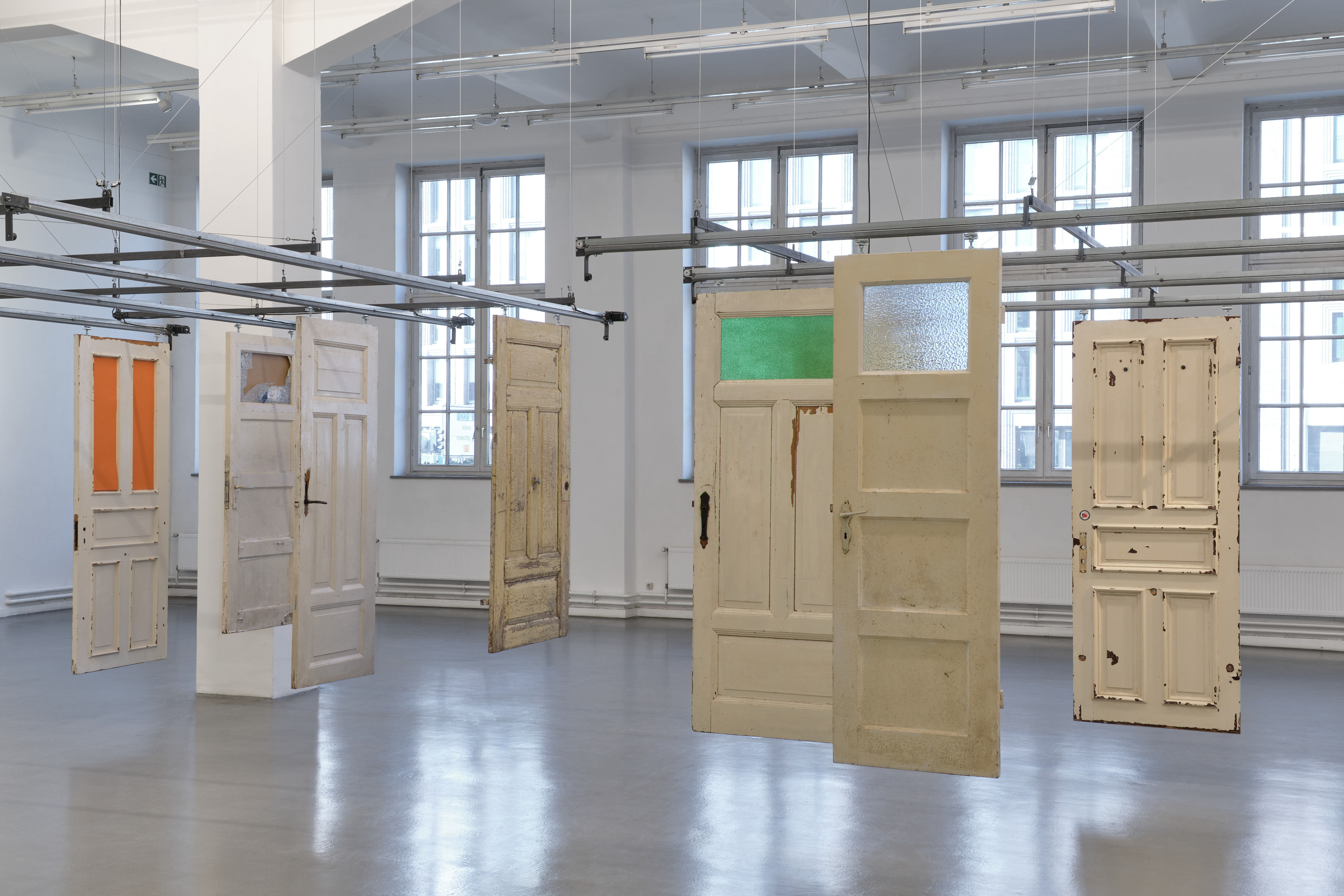
Nicholas Odhiambo Mboya, Transit Point, 2023, Courtesy the artist; Photo: Antje Sauer
Advertisement
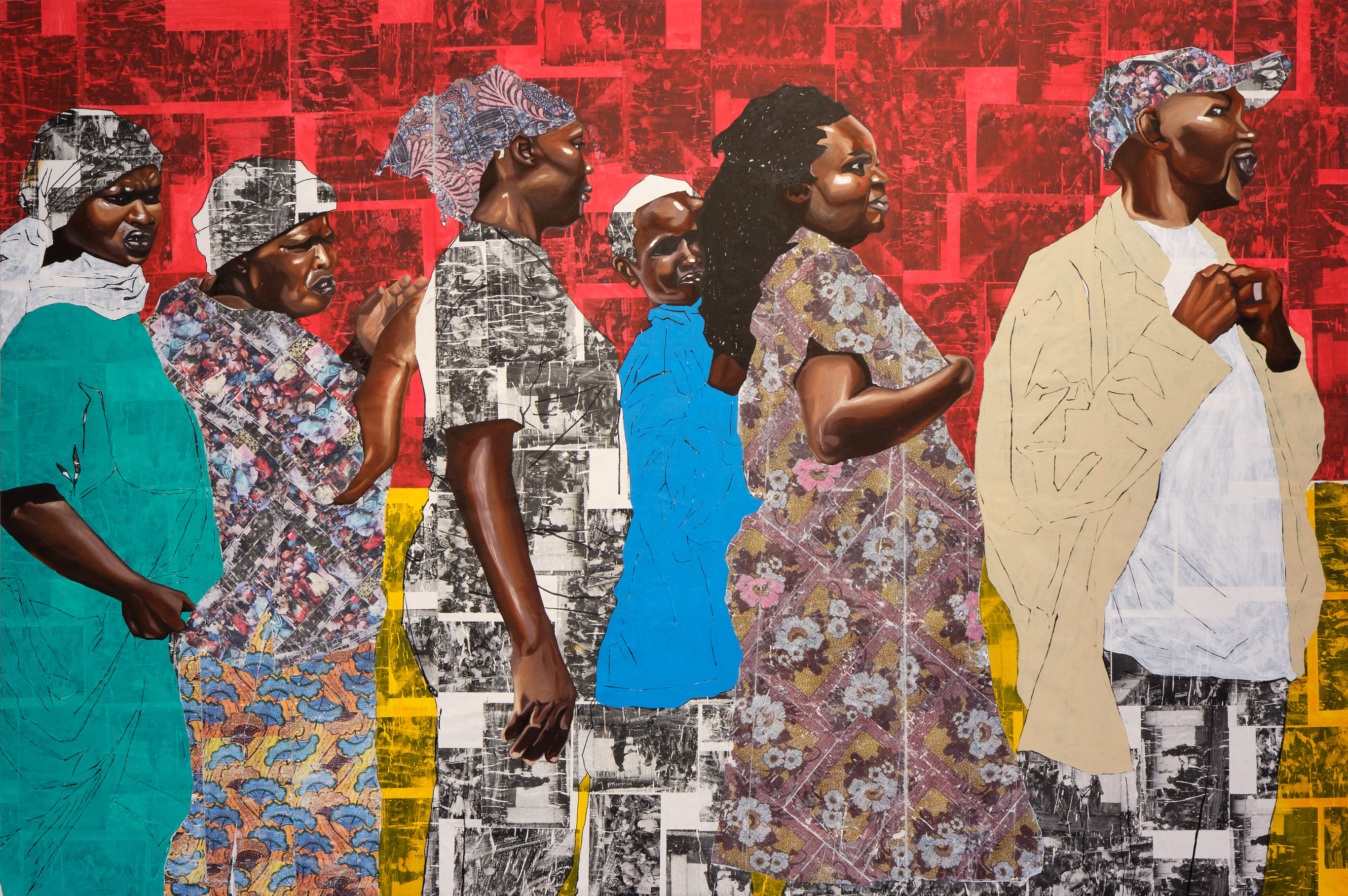
Nicholas Odhiambo Mboya, In Trail Pursuit IV, 2025, Image transfer, oil and acrylic on canvas, 4,5 x 3 m, Courtesy the artist; Photo: Antje Sauer
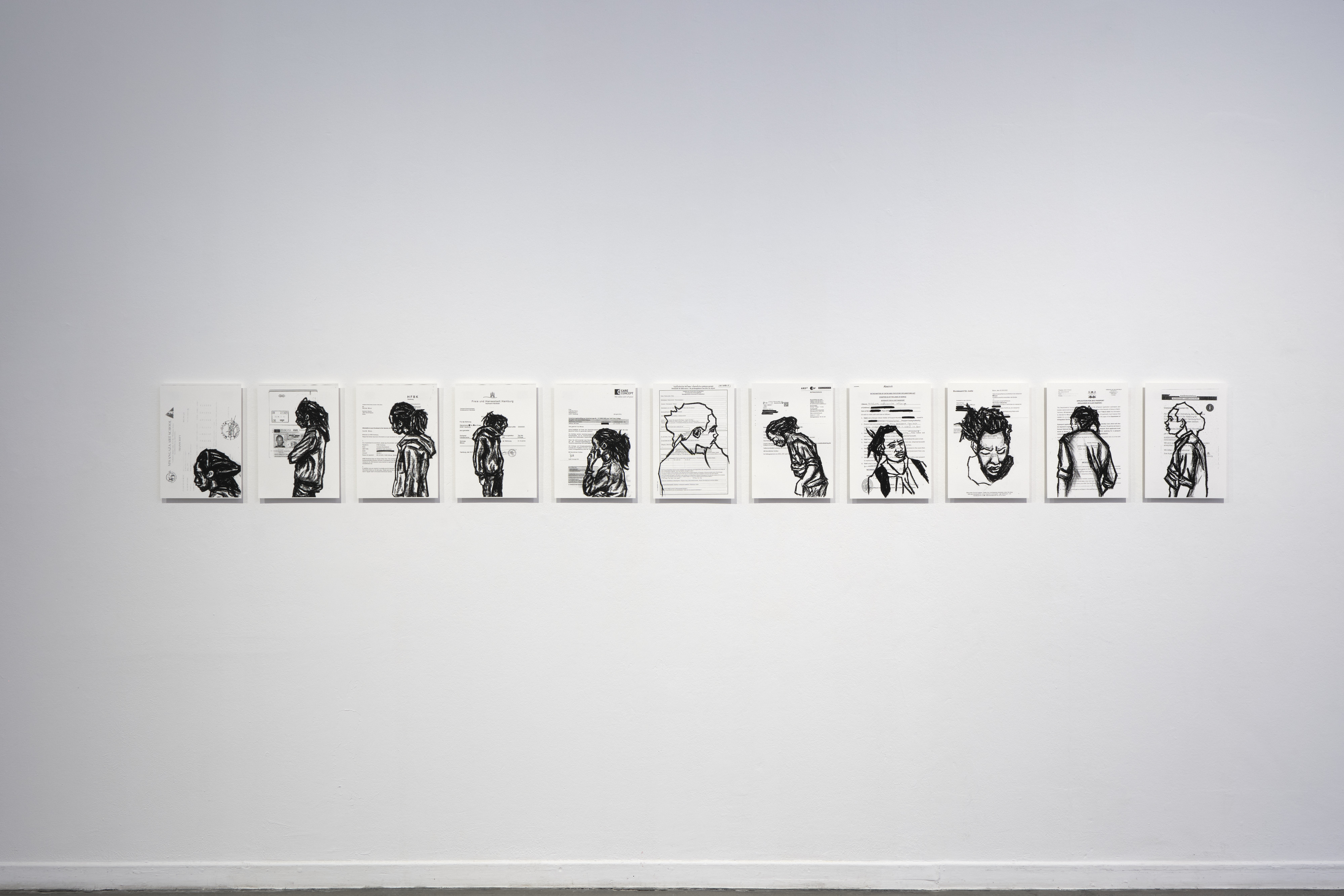
Installation view: Nicholas Odhiambo Mboya, Rite of Passage, 2020, charcoal drawings on found documents (reproduced as digital prints), 30 x 42 cm, Courtesy the artist; Photo: Antje Sauer
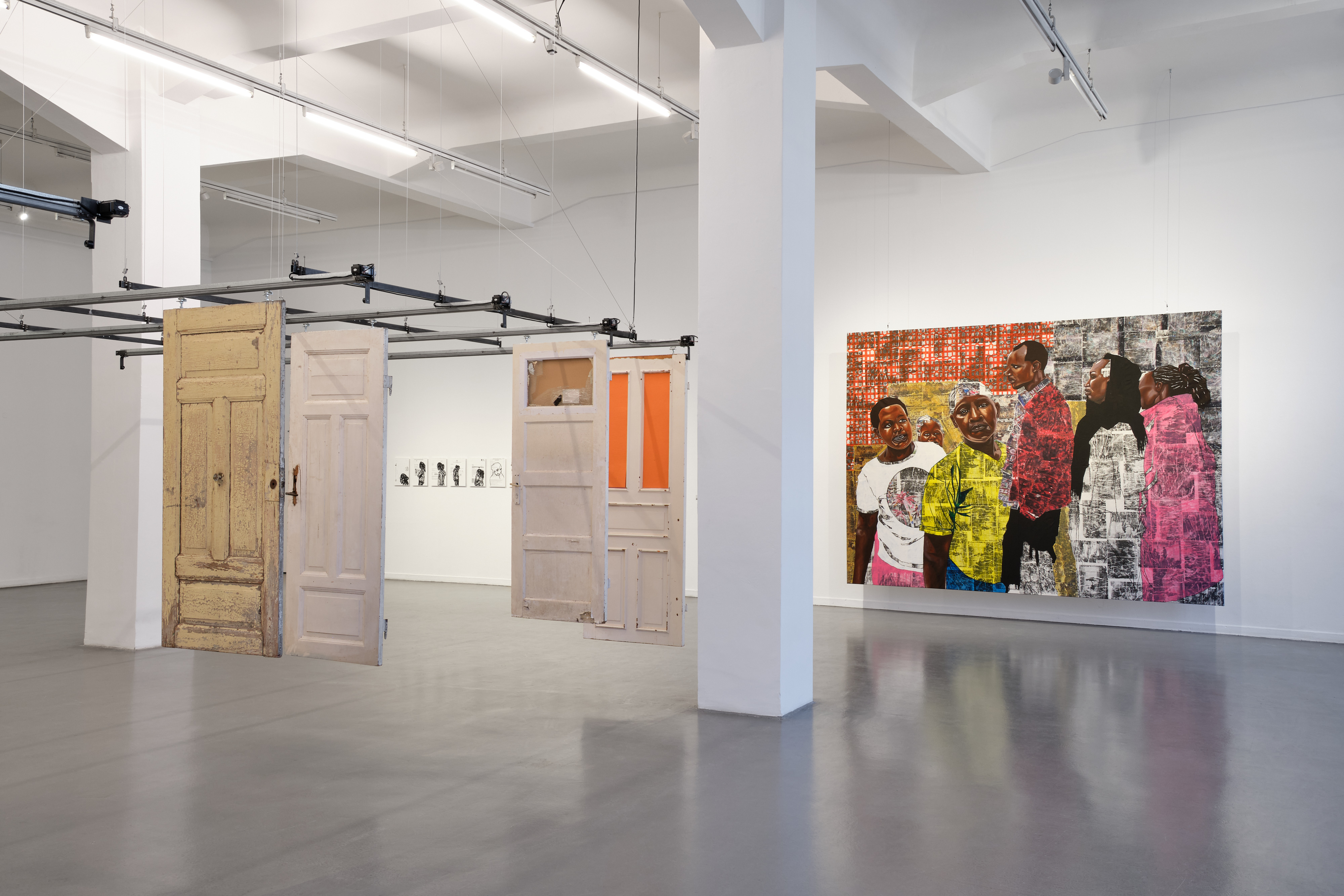
Installation view: Nicholas Odhiambo Mboya: Utopia – Dystopia, Kunsthaus Hamburg 2025; Photo: Antje Sauer
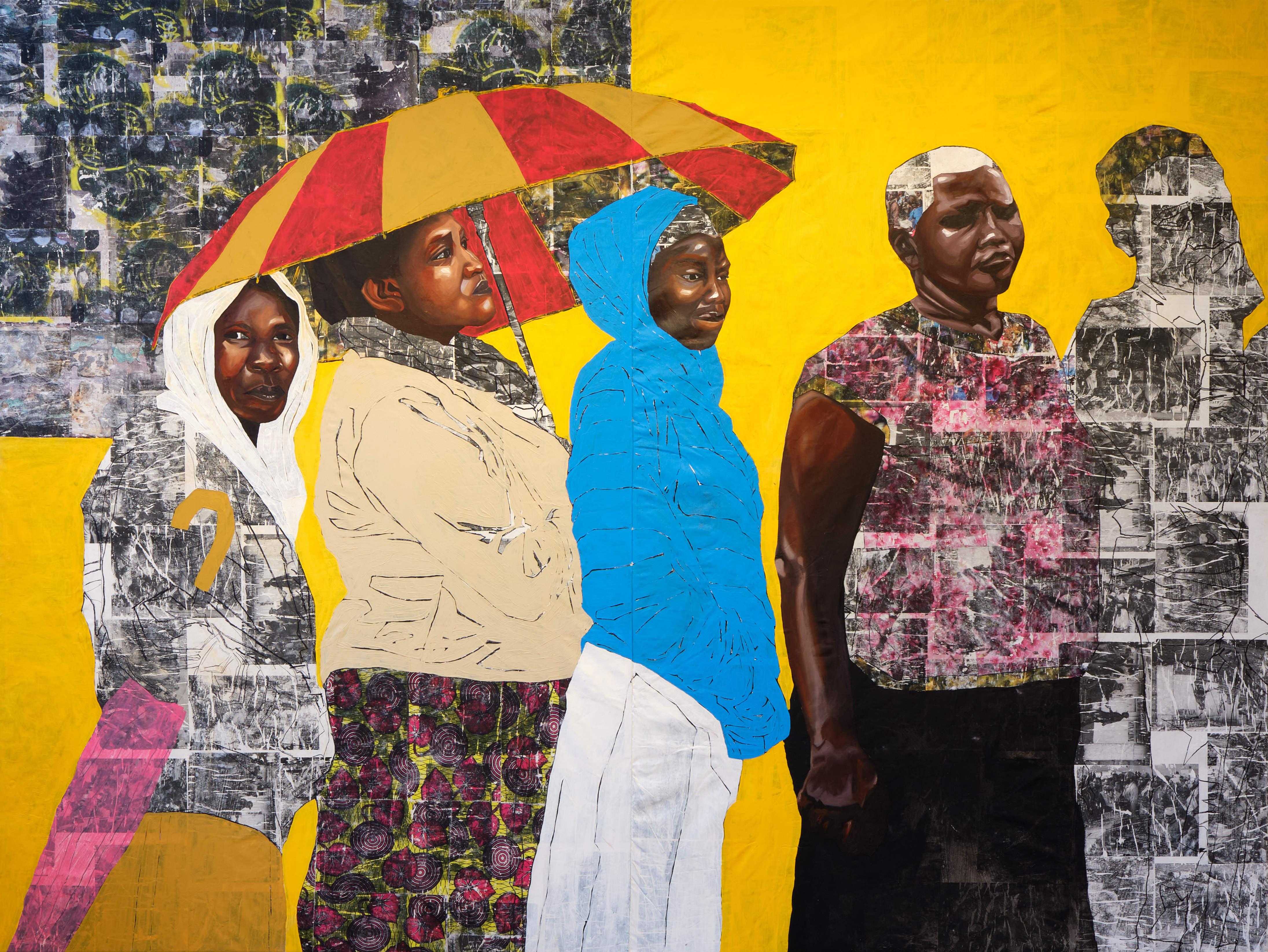
Nicholas Odhiambo Mboya, In Trail Pursuit III, 2025, Image transfer, oil and acrylic on canvas, 4 x 3 m, Courtesy the artist; Photo: Antje Sauer
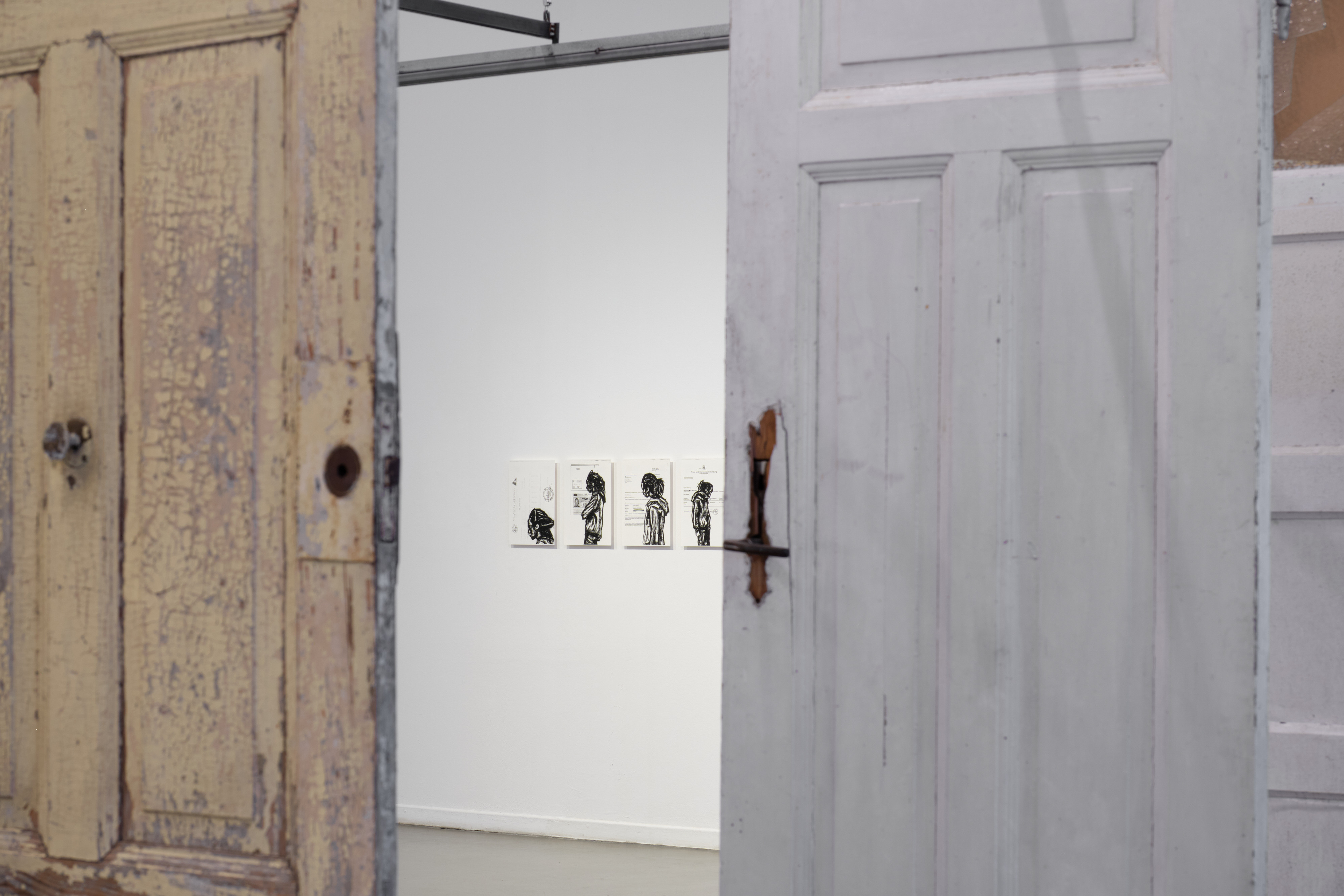
Installation view: Nicholas Odhiambo Mboya: Utopia – Dystopia, Kunsthaus Hamburg 2025; Photo: Antje Sauer
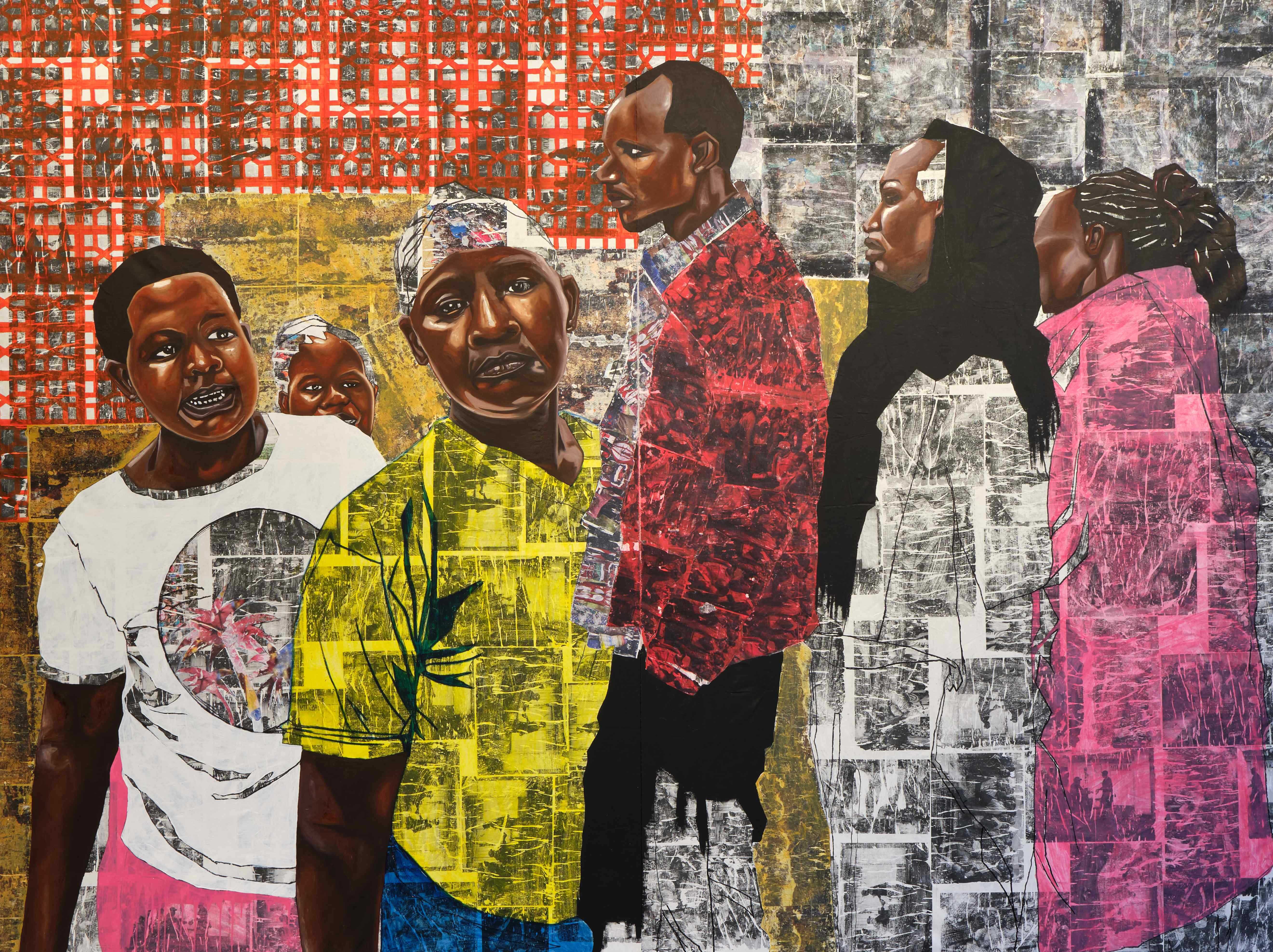
Nicholas Odhiambo Mboya, In Trail Pursuit II, 2025, Image transfer, oil and acrylic on canvas, 4 x 3 m, Courtesy the artist; Photo: Antje Sauer
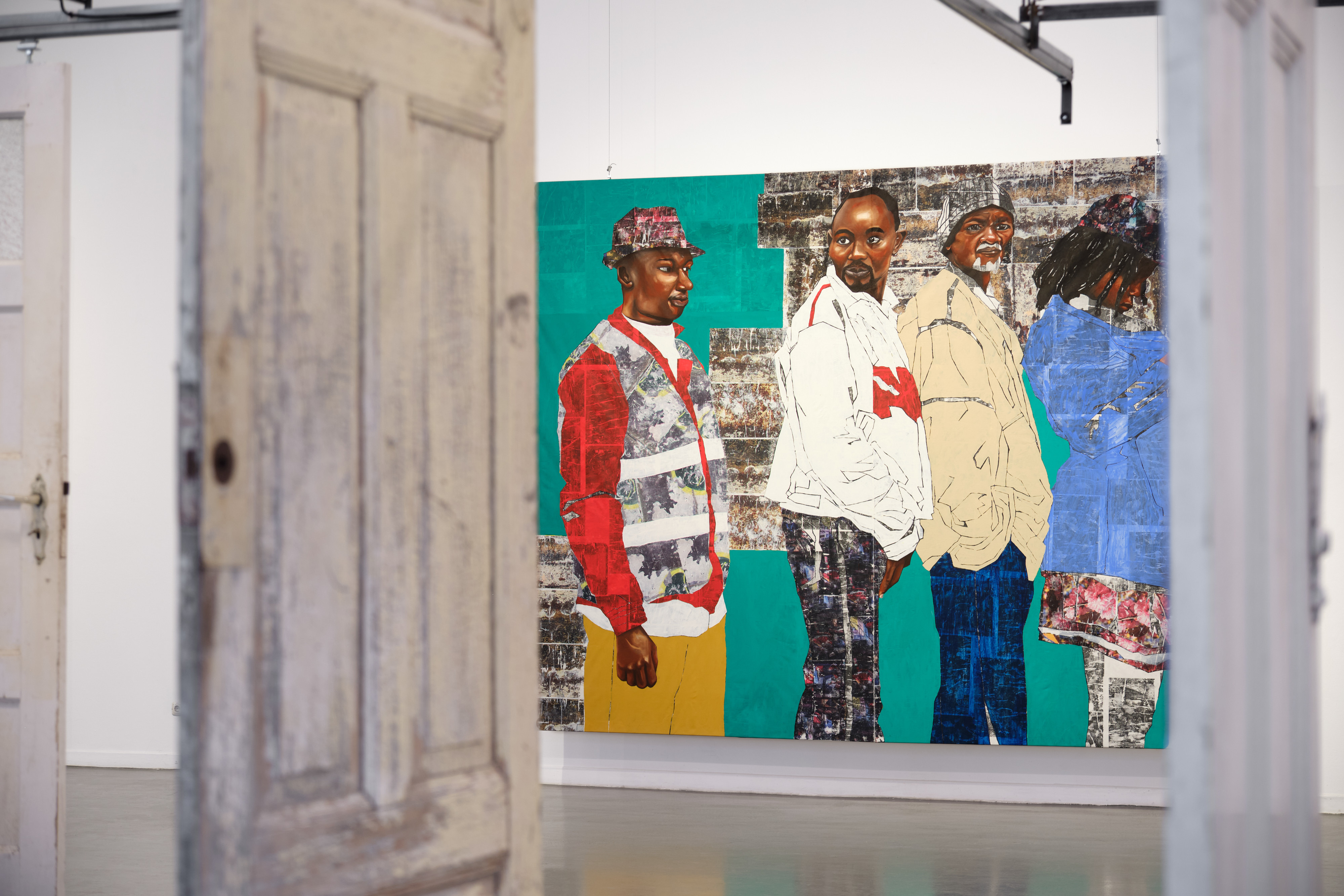
Installation view: Nicholas Odhiambo Mboya: Utopia – Dystopia, Kunsthaus Hamburg 2025; Photo: Antje Sauer
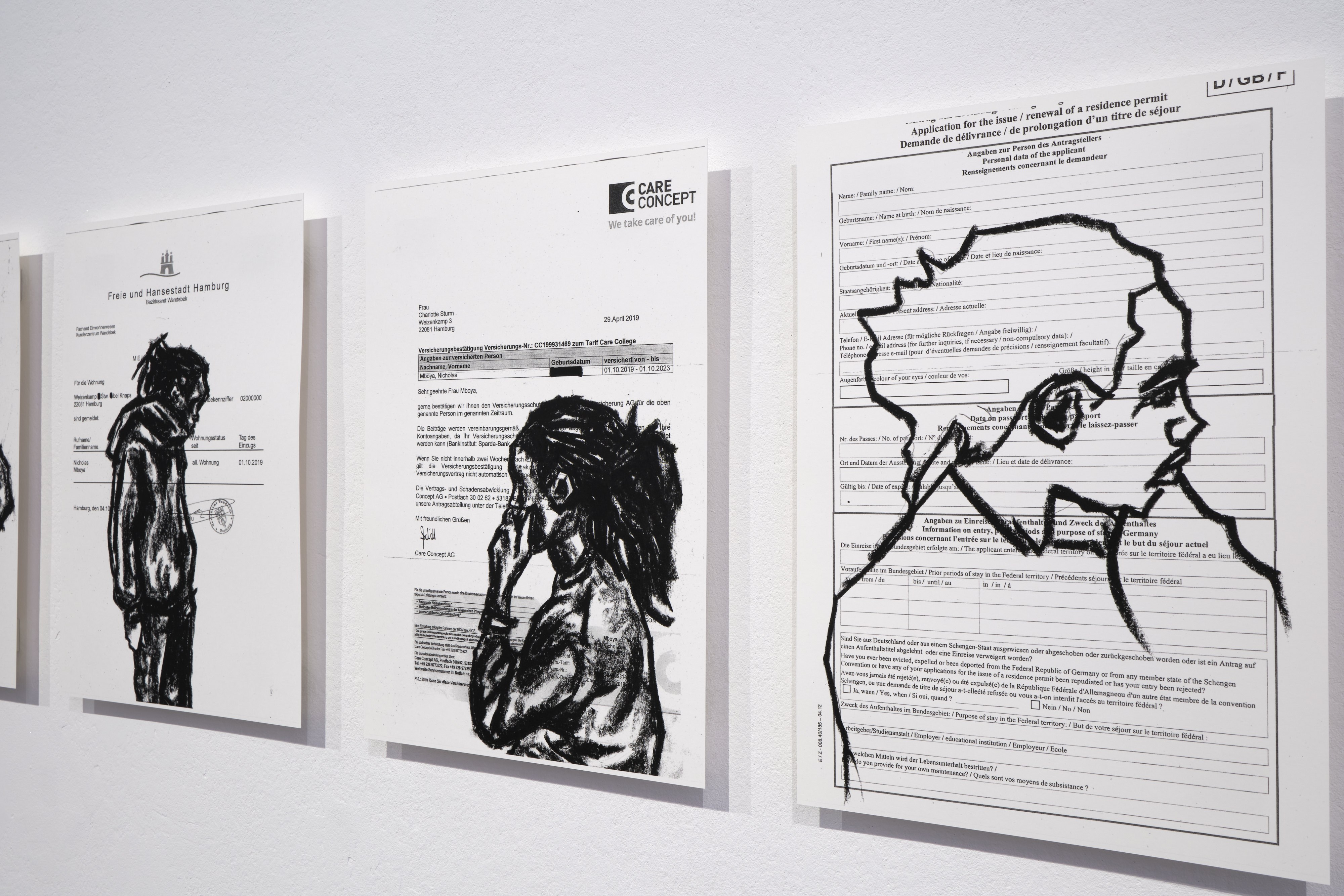
Installation view: Nicholas Odhiambo Mboya, Rite of Passage, 2020, charcoal drawings on found documents (reproduced as digital prints), 30 x 42 cm, Courtesy the artist; Photo: Antje Sauer
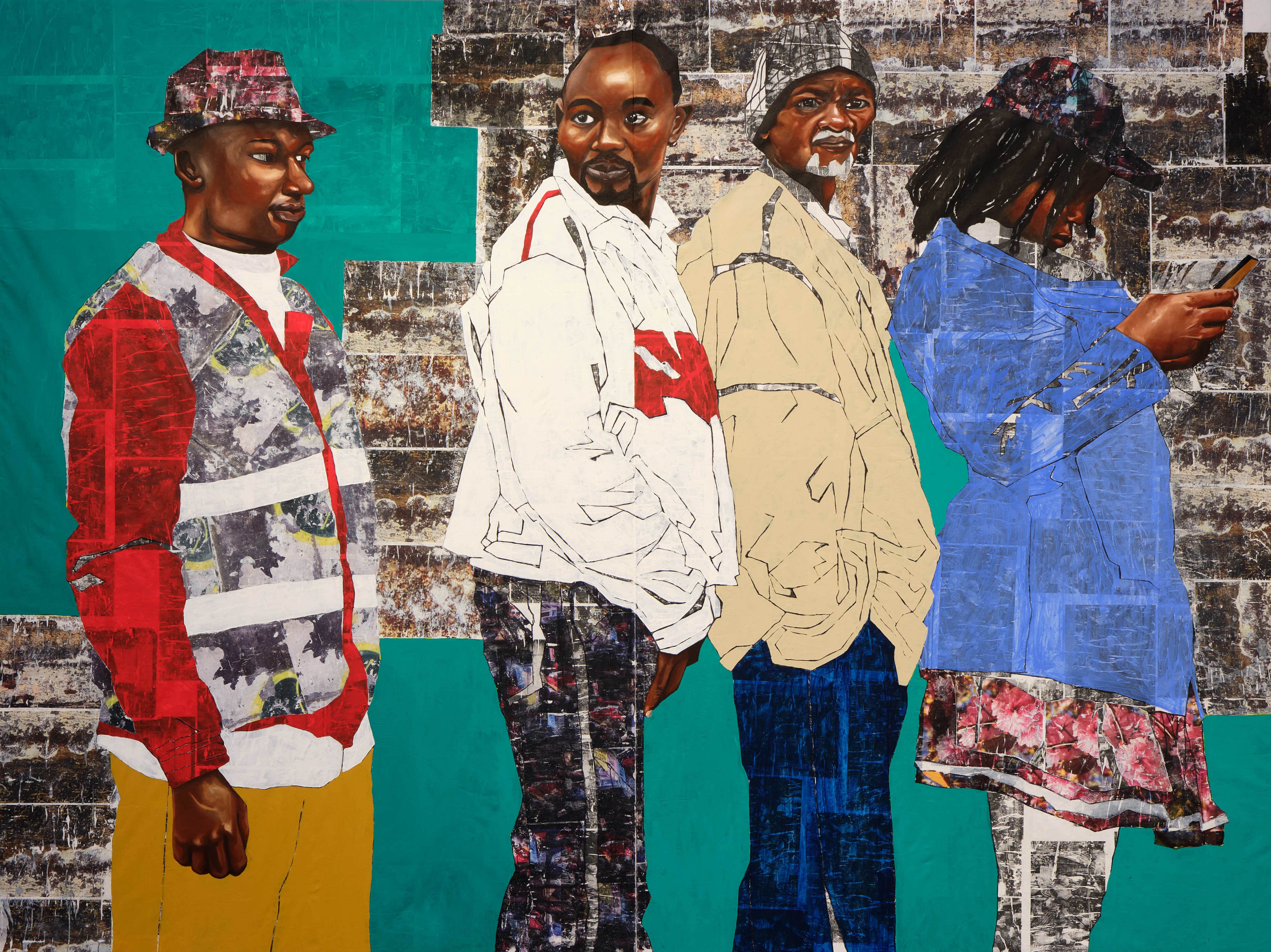
Nicholas Odhiambo Mboya, In Trail Pursuit I, 2025, Image transfer, oil and acrylic on canvas, 4 x 3 m, Courtesy the artist; Photo: Antje Sauer
In his multimedia works, Hamburg-based artist Nicholas Mboya (*1992, Kisumu, KE) addresses socio-political issues in his home country of Kenya alongside experiences of the African diaspora in Germany. He thus raises questions about traditions and spiritual-political challenges and examines conceptions of identity. His first institutional solo exhibition entitled Utopia – Dystopia has been created specifically for Kunsthaus Hamburg. It revolves around the field of tension between idealized notions of belonging and actual experiences of exclusion. Here, utopia appears to be encoded doubly: as a mythical, imaginary homeland, romanticized from a distance, and also a place of longing, characterized by prosperity and cultural status. Contrasting with this is a dystopia that manifests itself in racism, alienation and socio-economic inequality. In this field marked by ambivalence, language represents a kind of threshold space, capable of facilitating a sense of belonging or denying access, creating understanding or causing exclusion. Language is a carrier of power, memory and identity. Who is speaking? Who understands? Who is understood?
The expansive kinetic installation Transit Point (2023) consists of found doors, motorized and mounted on rails, which the artist collected in different parts of Hamburg. The idea for the work arose during an encounter on a train, when a passenger who spoke Luo, like Nicholas Mboya himself, referred to him as a “jadhot”, which can be translated as “person of their own door”. This term is used in Luo-speaking communities, especially outside their homeland. As a symbol of different cultural identities, reflected in Mboya’s ability to speak Luo, Swahili, Sheng, Kikuyu, English and German, doors to him became a symbol of the negotiation of identity.
In the installation, the doors moving at varying intervals act as a symbolic cipher for linguistic and social thresholds. They represent the potential for mixing different languages and, at the same time, the exclusiveness that can accompany language policy. The rhythmic to and fro evokes urban transition zones – such as the nearby, heavily frequented Hamburg central station – places of anticipation, transculturality, multilingualism and fleeting encounters. The doors challenge viewers on the physical level to relate themselves to the movement and their surroundings. The installation thus becomes an experiential space regarding the principle of transit – in the sense of a physical passage and as an existential state of limbo.
The kinetic sculpture also references the fragile balance of diasporic existence: a ceaseless negotiation between visibility and invisibility, belonging and foreignness. Expanded for the hall of the Kunsthaus and positioned at its centre, it turns the exhibition space into a metaphorical Panopticon. Based on Jeremy Bentham’s prison model of the same name – where the guard can observe all the cells from a tower while the inmates cannot see the guard – the French philosopher Michel Foucault coined the term panopticism in the 1970s to symbolize the subtle mechanisms of power. He opens a perspective on the relationship between the state and the individual, and demonstrates how control in modern societies develops less through coercion rather than self-monitoring and discipline within social structures. In the context of the exhibition, the Panopticon stands for colonial and contemporary control mechanisms to which people can be exposed in different realities of life. At the same time, it mirrors internalized surveillance mechanisms and deals with external and self-attribution. Surveillance plays a role in one’s own identity formation to the extent that external control is transformed into internal discipline – shaping thought, behaviour and self-perception.
The installation is framed by a series of large-format paintings visualizing socio-political structures. In these works, entitled In Trail Pursuit (2025), Nicholas Mboya transfers found archive and newspaper material onto canvases using image transfer techniques. From there, he develops dense collages, which he then paints over. They show people in Kenya in moments of waiting – at the polls, at land allocations, in schools or at border posts. Painterly interventions alluding to cultural identity, property and political coding overlay the documentary planes. Motifs like cherry blossoms or floral ornaments signify the coming of spring along with anticipated change. Queues symbolize the act of navigating through physical and metaphorical systems alike, embodying the interplay between patience and impatience, individual hope and collective order. Nicholas Mboya transforms these everyday occurrences into a complex narrative about social spheres, rules and realities. Queuing thus turns out as a social choreography in which power relations, hope, exclusion and belonging are manifested. Gestures of waiting are universal, but the specific conditions vary greatly: who gets in line and who is left out? The depicted figures refer to questions of visibility in public space and at the same time negotiate the relationship between individual needs and collective conditions as a shared experience of standstill.
The exhibition is complemented by a selection of drawings from the series Rite of Passage (2020, ongoing). These are self-portraits the artist created on photocopied documents such as passports, bank statements and other official documents, particularly those required by immigration authorities, ultimately, to decide on matters of accessibility and participation. In this group of works, the artist deals with institutional representation, bureaucratic classification and the marginalization associated with it. The use of black ink on white paper hints at the supposed reliability of the written word over verbal agreements as proof of access or exclusion. The material itself thus reflects the blurred lines of legal norms along with the ambivalence underlying bureaucratic promises of protection. Here, the social dimensions of waiting condense into a personal narrative. The drawings convey the feeling of uncertainty before the residency status is extended, but also the stagnant time of waiting. They disclose what usually remains hidden under the covers of administrative files – the emotional impact of state decisions.
Utopia – Dystopia is an exhibition about movement and stagnation, about attributions versus self-assertion. It places the human body at the centre – as a bearer of history, memory and resistance, as a permeable membrane between the inner and outer worlds, a projection surface for social expectations and as an actor that claims space and positions itself. In the works on display, the body will appear sometimes fragmented, sometimes static, then again in motion – but always as an arena of negotiation processes into which attributions, traumas and utopian designs are inscribed in equal measure. Nicholas Mboya renders visible the structural conditions of diasporic existence. His works invite us to reconsider relationships – not as being predetermined, but rather as negotiable. They show how collective questions can be derived from personal experience – poetically condensed and politically urgent.
Anna Nowak

